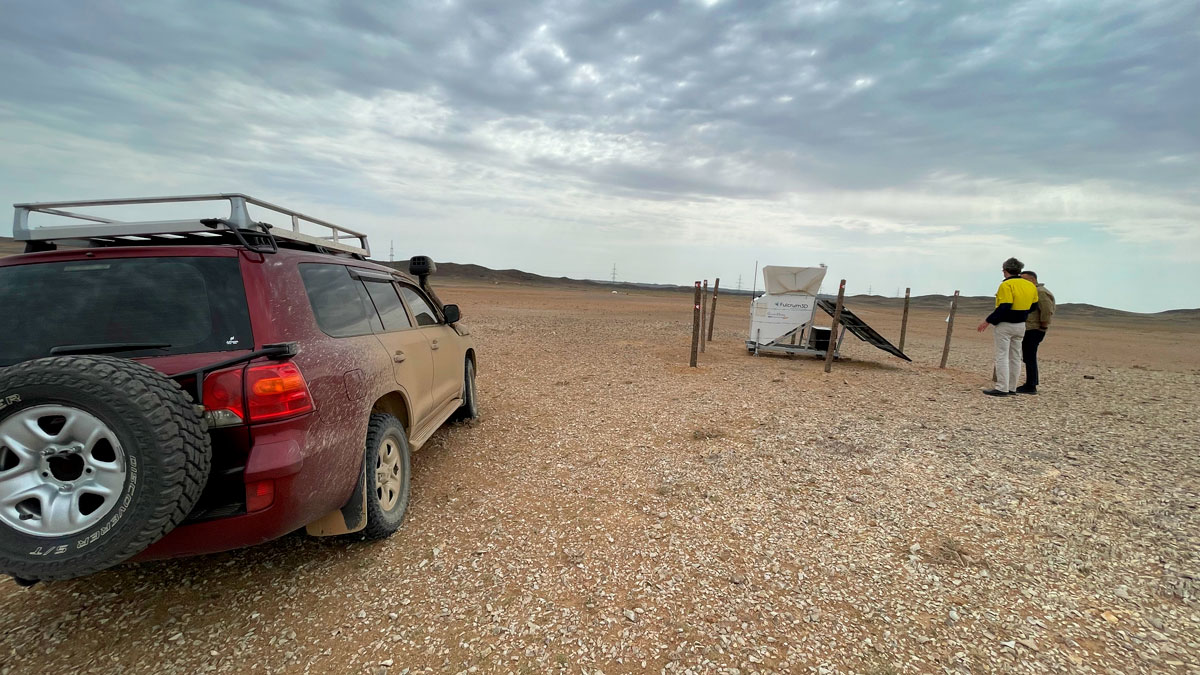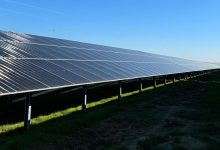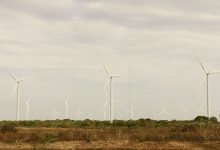Gobi H2 Project to Produce 500,000 t of Green Hydrogen p.a.
The proposed Gobi H2 Project, in the long term is aiming to produce 500,000 tonnes of green hydrogen per annum, will be powered by 11.3 GW of renewable wind and solar generation.
Australian cleantech business Fulcrum3D is deploying two of its innovative remote sensing Sodar units to capture further bankable wind data in Mongolia’s Gobi Desert region. The wind data collected over the next two years is critical to demonstrating the potential of Elixir Energy’s proposed green hydrogen Gobi H2 Project.
This deployment is off the back of a successful initial Sodar wind resource monitoring campaign that the developer is firming up in the broader region.
Elixir Energy’s project, which has a promising opportunity to make Mongolia a regional green energy leader and power the likes of northern China’s significant steel industry, has recently executed an MOU with SB Energy Corp (a wholly owned subsidiary of Japan’s SoftBank Group Corp) to mutually pursue the project.
The Mongolian Government entered an MoU with Elixir Energy in October 2021, showcasing the proposed project’s national-level infrastructure growth potential and Mongolia’s support for green energy.
Fulcrum3D’s technology will measure the area’s wind power potential, with the data gathered used to inform how the project proceeds and how best it can maximise the very strong wind resource.
“The Gobi region is relatively untested for renewable resource data. Pioneering wind data measurement with our SODAR unit has been an exciting opportunity to be at the forefront of green hydrogen development in an area rich in possibilities,” Dr Colin Bonner, Managing Director and Co-founder of Fuclrum3D, said.
Neil Young, Managing Director of Elixir Energy, added: “Having a fleet of Fulcrum3D Sodars deployed means we have been logging data immediately after the equipment arriving at the measurement sites. We haven’t experienced any of the delays or issues often encountered when working in remote areas. Mongolia has endless renewables potential, and while the Gobi region is geographically remote, it is not without a history of utility-scale development. Rio Tinto’s Oyu Tolgoi copper and gold mine is just up the road. Development of the Gobi H2 Project, in partnership with SB Energy, will continue to develop Mongolia’s export capabilities. It is also important to note that Mongolia is not the remote country many may think. In many respects, Mongolia is less isolated than Australia for exporting commodities like hydrogen because it isn’t separated by oceans, which take weeks to travel across. This is a very substantial cost benefit.”
Operating in the remote Gobi Region of southern Mongolia, Fulcrum3D’s Sodar unit has proven invaluable due to the ease and much lower deployment cost compared to other technologies such as MET masts which require more permanent construction. Fulcrum3D’s Sodar has also had lower environmental and visual impacts by being smaller and low to the ground, could be a concern of residents of the sparsely developed region.
Dr Bonner continued, “when we started Fulcrum3D, we set out to develop products which are lower cost, rugged and easily deployable to provide versatility for our customers. This deployment to the Gobi Desert, far away from major populated areas, showcases our products’ strengths. The Gobi H2 project would take a far longer time to get basic data if MET masts were required. We have been able to fly in one of our Sodars, attach it to a vehicle and deploy it.”







